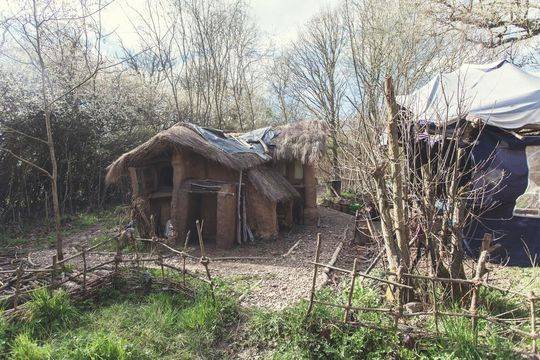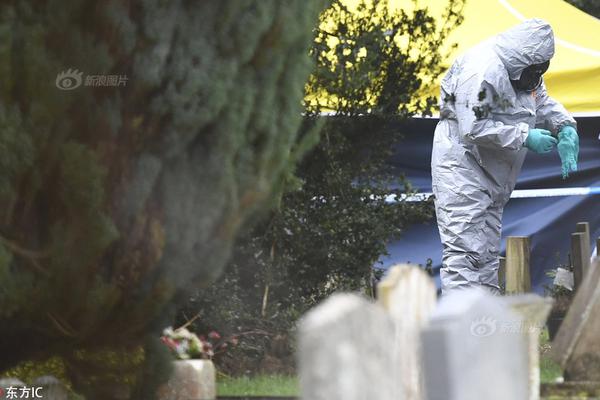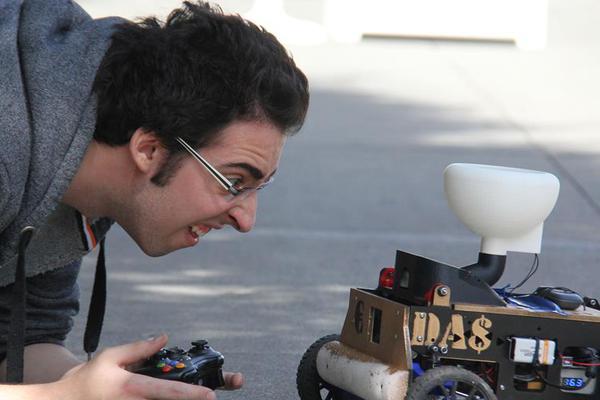
Check the hardware configuration in the boot self-test. After the machine assembly, the power-up test can be carried out even if the operating system is not installed. A brief introduction to the hardware configuration is hidden in the boot self-test screen, because the boot screen flashes by. If you want to see it clearly, remember to Press and hold the "PAUSE" key.
XP looks at the computer memory. Right-click "My Computer" - "Properties" on the desktop. In the open interface, the CPU model and main frequency are displayed below the computer. Win7/8/10 Look at the computer memory.
Enter "dxdiag" in the run. If a DirectX diagnostic tool dialog box pops up, prompting us whether we want to check, click OK. Through the pop-up DirectXThe diagnostic tool interface to view the configuration information of the computer: a. The red box in the figure below is the CPU and memory information.
The details are as follows: open Start and click "Run". Enter "dxdiag" in the running dialog box and confirm or press Enter. A diagnostic tool dialog box will pop up, which can view some parameters of the system. You can check the parameters of the display device, the driver version and others.
II: Use the device manager to view the hardware configuration: right-click "My Computer" on the desktop and select "Properties" -- call up the properties dialog box, select "Hardware" and then select "Device Manager" to check the optical drive, disk controller chip, CPU, disk drive, monitor, keyboard, sound Audio and video, display cards and other hardware information.
xp How to check the computer configuration?You can see the computer configuration when you enter the device manager.

After booting, enter my computer, can It is enough to see the disks in our computer. You can see how big the hard disk is here. You can directly click the left mouse button and drag to cover the disk in the blank space, or select them one by one.After selecting, right-click on the properties.
Right-click "My Computer" to open "Properties" of the computer. In the pop-up computer properties dialog box, you can see the information of the system's CPU and memory. Click "Hardware" and then open "Device Manager". Pop up the "Device Manager" interface.
Check the hardware configuration in the power-on self-test. After the machine assembly, you can carry out a power-up test even without installing the operating system. A brief introduction to the hardware configuration is hidden in the power-on self-test screen, because the power-on screen flashes by. If you want to see it clearly, remember to hold down the "PAUSE" button in time. .
1. Enter "dxdiag" in the run.If a DirectX diagnostic tool dialog box pops up, prompting us whether we want to check, click OK. Check the configuration information of the computer through the pop-up DirectX diagnostic tool interface: a. The red box in the figure below is the CPU and memory information.
2. Right-click [My Computer] and click [Properties] in the pop-up command bar. Then click [Device Manager] on the left. You can check the configuration and model of the computer in the device manager. You can click whichever hardware information you need to see. Method 2: right-click the [Windows] icon in the lower right corner of the computer in dxdiag.
3. Press the "Win+R" combination key, open the "Run" window, enter "control" and click "OK"; enter the "Control Panel", find the "System and Security" option, and click "View Computer Information";In the pop-up window, you can view the basic information and hardware configuration information of the computer.
4. Operation steps and diagrams Take Win11 as an example, and the operation of Win10 is basically the same) Drop-down to see [Related Settings]: 1 Click [Product Key and Activation] to view the activation status of the current device. The computer pre-installed with Win10/11 system will be automatically activated after networking.
1. Right-click "My Computer" to open the computer "Properties". In the pop-up computer properties dialog box, you can see the information of the system's CPU and memory. Click "Hardware" and then open "Device Manager". Pop up the "Device Manager" interface.
2. Question 2: How to check the configuration of the home computer How to view the configuration of the computer.
3. Enter "dxdiag" in the run. If a DirectX diagnostic tool dialog box pops up, prompting us whether we want to check, click OK. Check the configuration information of the computer through the pop-up DirectX diagnostic tool interface: a. The red box in the figure below is the CPU and memory information.
2. XP looks at the computer memory. Right-click "My Computer" - "Properties" on the desktop. In the open interface, the CPU model and main frequency are displayed below the computer. Win7/8/10 Look at the computer memory.
3. Right-click "My Computer" to open the computer "Properties". In the pop-up computer properties dialog box, you can see the information of the system's CPU and memory. Click "Hardware" and then open "Device Manager". Pop up the "Device Manager" interface.
Binance APK-APP, download it now, new users will receive a novice gift pack.
Check the hardware configuration in the boot self-test. After the machine assembly, the power-up test can be carried out even if the operating system is not installed. A brief introduction to the hardware configuration is hidden in the boot self-test screen, because the boot screen flashes by. If you want to see it clearly, remember to Press and hold the "PAUSE" key.
XP looks at the computer memory. Right-click "My Computer" - "Properties" on the desktop. In the open interface, the CPU model and main frequency are displayed below the computer. Win7/8/10 Look at the computer memory.
Enter "dxdiag" in the run. If a DirectX diagnostic tool dialog box pops up, prompting us whether we want to check, click OK. Through the pop-up DirectXThe diagnostic tool interface to view the configuration information of the computer: a. The red box in the figure below is the CPU and memory information.
The details are as follows: open Start and click "Run". Enter "dxdiag" in the running dialog box and confirm or press Enter. A diagnostic tool dialog box will pop up, which can view some parameters of the system. You can check the parameters of the display device, the driver version and others.
II: Use the device manager to view the hardware configuration: right-click "My Computer" on the desktop and select "Properties" -- call up the properties dialog box, select "Hardware" and then select "Device Manager" to check the optical drive, disk controller chip, CPU, disk drive, monitor, keyboard, sound Audio and video, display cards and other hardware information.
xp How to check the computer configuration?You can see the computer configuration when you enter the device manager.

After booting, enter my computer, can It is enough to see the disks in our computer. You can see how big the hard disk is here. You can directly click the left mouse button and drag to cover the disk in the blank space, or select them one by one.After selecting, right-click on the properties.
Right-click "My Computer" to open "Properties" of the computer. In the pop-up computer properties dialog box, you can see the information of the system's CPU and memory. Click "Hardware" and then open "Device Manager". Pop up the "Device Manager" interface.
Check the hardware configuration in the power-on self-test. After the machine assembly, you can carry out a power-up test even without installing the operating system. A brief introduction to the hardware configuration is hidden in the power-on self-test screen, because the power-on screen flashes by. If you want to see it clearly, remember to hold down the "PAUSE" button in time. .
1. Enter "dxdiag" in the run.If a DirectX diagnostic tool dialog box pops up, prompting us whether we want to check, click OK. Check the configuration information of the computer through the pop-up DirectX diagnostic tool interface: a. The red box in the figure below is the CPU and memory information.
2. Right-click [My Computer] and click [Properties] in the pop-up command bar. Then click [Device Manager] on the left. You can check the configuration and model of the computer in the device manager. You can click whichever hardware information you need to see. Method 2: right-click the [Windows] icon in the lower right corner of the computer in dxdiag.
3. Press the "Win+R" combination key, open the "Run" window, enter "control" and click "OK"; enter the "Control Panel", find the "System and Security" option, and click "View Computer Information";In the pop-up window, you can view the basic information and hardware configuration information of the computer.
4. Operation steps and diagrams Take Win11 as an example, and the operation of Win10 is basically the same) Drop-down to see [Related Settings]: 1 Click [Product Key and Activation] to view the activation status of the current device. The computer pre-installed with Win10/11 system will be automatically activated after networking.
1. Right-click "My Computer" to open the computer "Properties". In the pop-up computer properties dialog box, you can see the information of the system's CPU and memory. Click "Hardware" and then open "Device Manager". Pop up the "Device Manager" interface.
2. Question 2: How to check the configuration of the home computer How to view the configuration of the computer.
3. Enter "dxdiag" in the run. If a DirectX diagnostic tool dialog box pops up, prompting us whether we want to check, click OK. Check the configuration information of the computer through the pop-up DirectX diagnostic tool interface: a. The red box in the figure below is the CPU and memory information.
2. XP looks at the computer memory. Right-click "My Computer" - "Properties" on the desktop. In the open interface, the CPU model and main frequency are displayed below the computer. Win7/8/10 Look at the computer memory.
3. Right-click "My Computer" to open the computer "Properties". In the pop-up computer properties dialog box, you can see the information of the system's CPU and memory. Click "Hardware" and then open "Device Manager". Pop up the "Device Manager" interface.
OKX Wallet app download for Android
author: 2025-02-28 08:29Binance app download Play Store
author: 2025-02-28 07:56 Binance wikipedia
Binance wikipedia
621.32MB
Check Binance download iOS
Binance download iOS
543.93MB
Check OKX download
OKX download
165.12MB
Check OKX Wallet app
OKX Wallet app
315.12MB
Check OKX Wallet login
OKX Wallet login
797.15MB
Check Binance wikipedia
Binance wikipedia
317.59MB
Check Binance market
Binance market
113.59MB
Check Binance login App
Binance login App
781.15MB
Check OKX Wallet
OKX Wallet
272.63MB
Check Binance Download for PC Windows 10
Binance Download for PC Windows 10
148.25MB
Check OKX review
OKX review
123.68MB
Check OKX review
OKX review
487.66MB
Check OKX Wallet apk download latest version
OKX Wallet apk download latest version
942.37MB
Check Binance wallet
Binance wallet
949.89MB
Check Binance login App
Binance login App
756.42MB
Check Binance login
Binance login
196.86MB
Check Binance login
Binance login
276.86MB
Check Binance app download Play Store
Binance app download Play Store
567.16MB
Check Binance wikipedia
Binance wikipedia
537.49MB
Check OKX Wallet apk download latest version
OKX Wallet apk download latest version
347.51MB
Check Binance app
Binance app
614.19MB
Check Binance exchange
Binance exchange
548.41MB
Check Binance app
Binance app
289.69MB
Check Binance app download Play Store
Binance app download Play Store
186.52MB
Check Binance US
Binance US
225.64MB
Check Binance market
Binance market
975.23MB
Check Binance download Android
Binance download Android
614.41MB
Check Binance download
Binance download
161.16MB
Check Binance login
Binance login
216.65MB
Check Binance download APK
Binance download APK
337.59MB
Check Binance exchange
Binance exchange
949.37MB
Check Binance exchange
Binance exchange
118.31MB
Check Binance Download for PC Windows 10
Binance Download for PC Windows 10
943.93MB
Check OKX Wallet to exchange
OKX Wallet to exchange
521.64MB
Check OKX app
OKX app
931.53MB
Check Binance app
Binance app
185.62MB
Check
Scan to install
Binance APK to discover more
Netizen comments More
2877 五彩缤纷网
2025-02-28 09:28 recommend
1755 一仍旧贯网
2025-02-28 09:13 recommend
2268 开阔眼界网
2025-02-28 08:41 recommend
784 妻梅子鹤网
2025-02-28 08:28 recommend
2176 荦荦大端网
2025-02-28 08:24 recommend